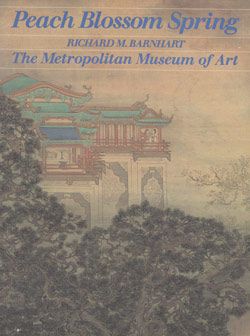White Peony and Rocks
Hua Yan Chinese
Not on view
Hua Yan worked in the prosperous city of Yangzhou at the time of the "Eight Eccentrics," a group whose bold idiosyncratic style extended beyond painting to personal attitudes and behavior. In developing the style of the early Qing masters Shitao (1642–1707), Zhu Da (1626–1705), and Yun Shouping (1633–1690), Hua made daring use of color, fresh realism in representation, and an unabashed display of brush virtuosity that made him a favorite model of late Qing and modern Chinese painters.
Hua Yan favored unorthodox juxtapositions such as the one seen here: suffused ink washes for the garden rocks contrasted with lyrical and perfectly controlled color tints for the delicate blossoms and leaves. In his inscription at upper left, he gives the Song dynasty sources for these two dissimilar techniques:
I follow Ma Yuan [act. ca. 1190–1225] in chopping lean rocks,
And imitate Xu Xi [act. 10th century] in plucking delicate blossoms.
The two masters' styles have their bitter and
sweet aspects;
Together they enhance the taste of my tea on the first
chilly day of autumn.
Due to rights restrictions, this image cannot be enlarged, viewed at full screen, or downloaded.


